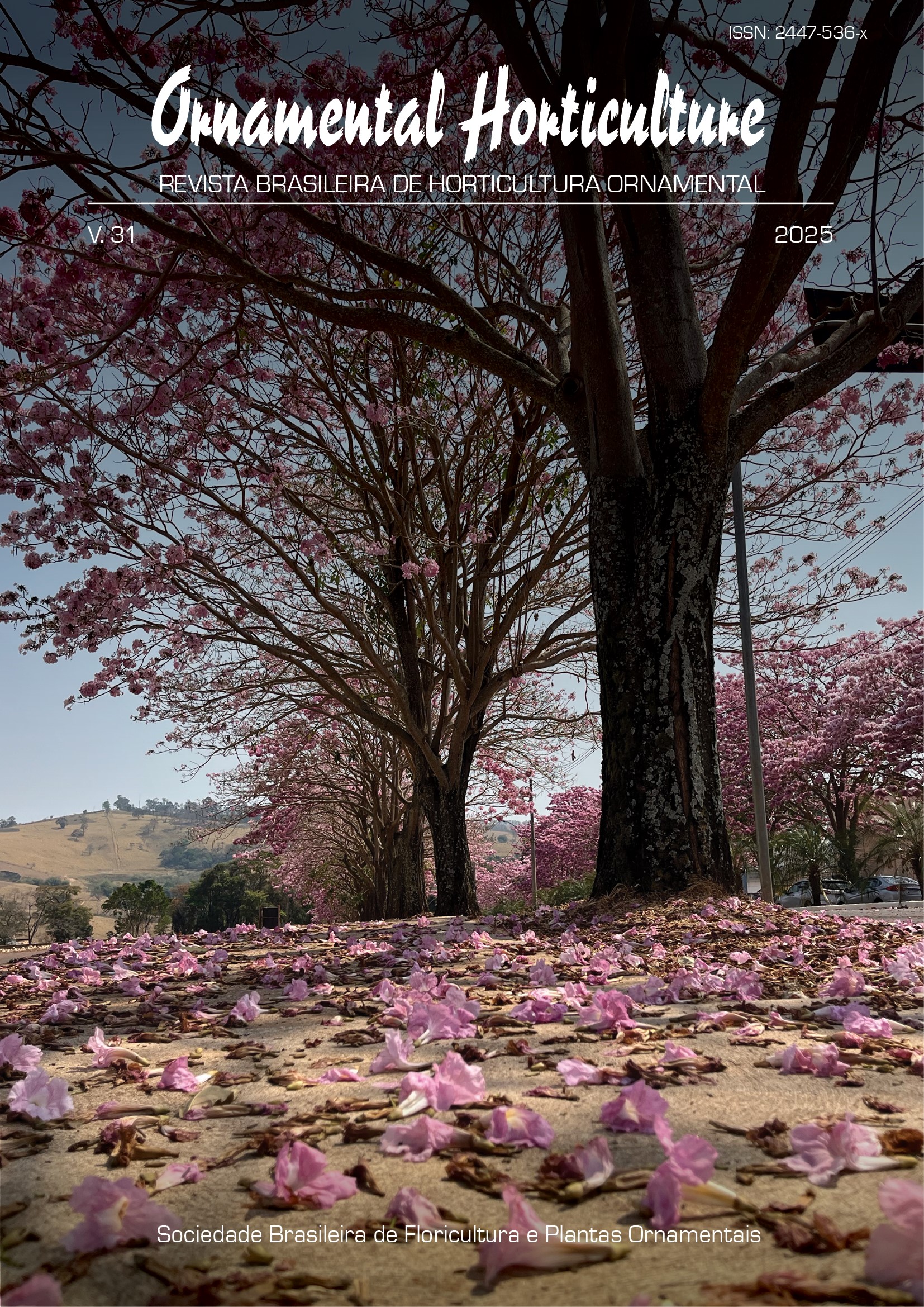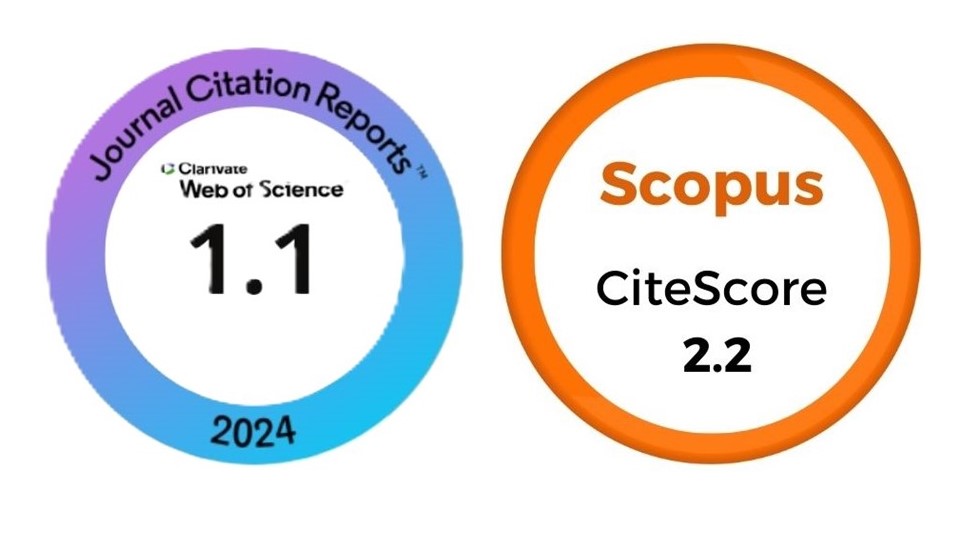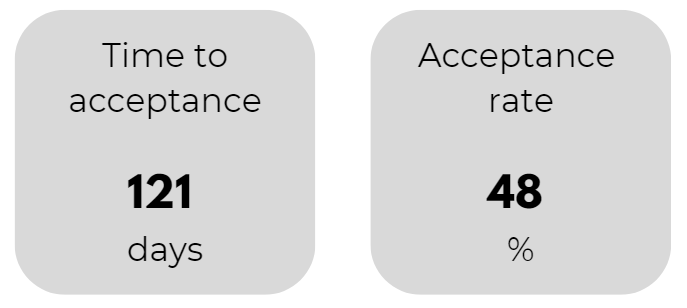Melatonin regulates oxidative stress to delay senescence in Hemerocallis fulva L.
DOI:
https://doi.org/10.1590/2447-536X.v31.e312832Keywords:
antioxidant enzymes, hydrogen peroxide, lipoxygenase, proline, vase lifeAbstract
Melatonin has emerged as a potent plant growth regulator, significantly enhancing the postharvest quality of horticultural products. Structurally analogous to the plant hormone indole-3-acetic acid, it regulates key processes like seed germination, growth, flowering and defense against abiotic stresses. Its powerful antioxidant properties make it an effective free radical scavenger, boosting plant resilience to oxidative stress and positioning it as an innovative phytohormone for postharvest treatments. The current study explores the efficacy of melatonin in delaying senescence in detached scapes of Hemerocallis fulva. Scapes were harvested when the most mature bud was one day before anthesis and treated with different concentrations of melatonin (40, 80, 120, and 160 µM). Results indicate that 120 µM melatonin treatment significantly delayed senescence, extending the vase life of the flower scapes (12 days) relative to untreated controls (7 days), which showed accelerated senescence. Melatonin application was associated with enhanced antioxidant enzyme activity, reduced lipoxygenase activity and diminished hydrogen peroxide (H2O2) levels, collectively alleviating oxidative stress. Furthermore, melatonin enhanced the content of soluble proteins, phenols, sugar fractions and proline content within the tepal tissues. The treatment also effectively suppressed bacterial proliferation and improved solution uptake in the flower scapes. These findings suggest that melatonin modulates the senescence of H. fulva by orchestrating oxidative stress responses and enhancing postharvest quality, offering a holistic and innovative approach to postharvest management.
Downloads
References
AEBI, H. Catalase in vitro. Methods in Enzymology, v.105, p.121-126, 1984. https://doi.org/10.1016/s0076-6879(84)05016-3
AHAMMED, G.J.; WU, M.; WANG, Y.; YAN, Y.; MAO, Q.; REN, J.; CHEN, S. Melatonin alleviates iron stress by improving iron homeostasis, antioxidant defense and secondary metabolism in cucumber. Scientia Horticulturae, v.265, p.109205, 2020. https://doi.org/10.1016/j.scienta.2020.109205
AHMAD, S.; SU, W.; KAMRAN, M. Foliar application of melatonin delay leaf senescence in maize by improving the antioxidant defense system and enhancing photosynthetic capacity under semi-arid regions. Protoplasma, v.257, p.1079-1092, 2020. https://doi.org/10.1007/s00709- 020-01491-3
ALEXIEVA, V.; SERGIEV, I.; MAPELLI, S.; KARANOV, E. The effect of drought and ultraviolet radiation on growth and stress markers in pea and wheat. Plant, Cell & Environment, v.24, n.12, p.1337-1344, 2001. https://doi.org/10.1046/j.1365-3040.2001.00778.x
ALTAF, M.A.; HAO, Y.; SHU, H.; MUMTAZ, M.A.; CHENG, S.; ALYEMENI, M.N., WANG, Z. Melatonin enhanced the heavy metal- stress tolerance of pepper by mitigating the oxidative damage and reducing the heavy metal accumulation. Journal of Hazardous Materials, v.454, p.131468, 2023. https://doi.org/10.1016/j.jhazmat.2023.131468
AXEROLD, B.; CHESBROUGH, TM; LAAKSO, S. Lipoxygenase from soybean. In: LOWENSTEIN, J.M. (ed). Methods of enzymology. New York: Academic Press, 1981. p.441-451. https://doi.org/10.1016/0076-6879(81)71055-3
BATES, L.S.; WALDREN, R.P.; TEARE, I.D. Rapid determination of free proline for water-stress studies. Plant and Soil, v.39, p.205-207, 1973. https://doi.org/10.1007/BF00018060
BOSE, S.K.; HOWLADER, P. Melatonin plays multifunctional role in horticultural crops against environmental stresses: A review. Environmental and Experimental Botany, v.176, p.104063, 2020. https://doi.org/10.1016/j.envexpbot.2020.104063
CHEN, GX; ASADA, K. Ascorbate peroxidase in tea leaves: occurrence of two isozymes and the differences in their enzymatic and molecular properties. Plant Cell Physiology, v.30, p.987-998, 1989. https://doi.org/10.1093/oxfordjournals.pcp.a077844
DHINDSA, R.S.; PLUMB-DHINDSA, D.; THORPE, T.A. Leaf senescence: correlated with increased levels of membrane permeability and lipid peroxidation, and decreased levels of superoxide dismutase and catalase. Journal of Experimental Botany, v.32, p.93-101, 1981. https:// doi.org/10.1093/jxb/32.1.93
HAQ, A.U.; FAROOQ, S.; LONE, M.L. Blossoming Beyond Time: Proline orchestrates flower senescence in Ranunculus asiaticus L. by modulating biochemical and antioxidant machinery. Journal of Plant Growth Regulation, 2024. https://doi.org/10.1007/s00344-024-11452-2
HASANUZZAMAN, M.; BHUYAN, M.B.; ZULFIQAR, F.; RAZA, A.; MOHSIN, S.M.; MAHMUD, J.A.; FOTOPOULOS, V. Reactive oxygen
species and antioxidant defense in plants under abiotic stress: Revisiting the crucial role of a universal defense regulator. Antioxidants, v.9, n.8, p.681 2020. https://doi.org/10.3390/antiox9080681
JINDAL, P.; KANT, K.; KAUR, N.; GUPTA, S.; ALI, A.; NAEEM, M. Melatonin: discovery, biosynthesis, phytohormones crosstalk, and roles in agricultural crops under abiotic stress conditions. Environmental and Experimental Botany, p.105942, 2024. https://doi.org/10.1016/j.envexpbot.2024.105942
JING, T.; LIU, K.; WANG, Y.; AI, X.; BI, H. Melatonin positively regulates both dark-and age-induced leaf senescence by reducing ROS accumulation and modulating abscisic acid and auxin biosynthesis in cucumber plants. International Journal of Molecular Sciences, v.23, n.7, p.3576. https://doi.org/10.3390/ijms23073576
KAYA, C.; SARIOGLU, A.; ASHRAF, M.; ALYEMENI, M. N.; AHMAD, P. The combined supplementation of melatonin and salicylic acid effectively detoxifies arsenic toxicity by modulating phytochelatins and nitrogen metabolism in pepper plants. Environmental Pollution, v.297, p.118727, 2022. https://doi.org/10.1016/j.envpol.2021.118727
LONE, M.L.; FAROOQ, S.; HAQ, A.U. Antagonistic interrelation between abscisic acid and gibberellic acid in the regulation of senescence in ray florets of Calendula officinalis L. Journal of Plant Growth Regulation, v.43, n.10, p.3671-3684, 2024. https://doi.org/10.1007/ s00344-024-11342-7
LOWRY, O.H.; ROSEBROUGH, N.J.; FARR, A.L.; RANDALL, R.J. Protein measurement with the Folin phenol reagent. Journal of Biological Chemistry, v.193, n.1, p.265-275, 1951. https://doi.org/10.1016/s0021-9258(19)52451-6
LU, X.; MIN, W.; SHI, Y.; TIAN, L.; LI, P.; MA, T.; LUO, C. Exogenous melatonin alleviates alkaline stress by removing reactive oxygen species and promoting antioxidant defence in rice seedlings. Frontiers in Plant Science, v.13, p.849553, 2022. https://doi.org/10.3389/fpls.2022.849553
MAZROU, R.M.; HASSAN, S.; YANG, M.; HASSAN, F.A.S. Melatonin preserves the postharvest quality of cut roses through enhancing the antioxidant system. Plants, v.11, p.2713, 2022. https://doi.org/10.3390/plants11202713
NAING, A.H.; WIN, N.M.; HAN, J.S.; LIM, K.B.; KIM, C.K. Role of nano-silver and the bacterial strain Enterobacter cloacae in increasing vase life of cut carnation ‘Omea’. Frontiers in Plant Science, v.8, p.1590, 2017. https://doi.org/10.3389/fpls.2017.01590
NELSON, N. A photometric adaptation of the Somogyi method for the determination of glucose. Journal of Biological Chemistry, v.153, p.375-380, 1944. https://doi.org/10.1016/s0021-9258(18)71980-7
NOUSIS, L.; KANAVAROS, P.; BARBOUTI, A. Oxidative stress-induced cellular senescence: is labile iron the connecting link?. Antioxidants, v.12, n.2, p.1250, 2023. https://doi.org/10.3390/antiox12061250
PHUA, S.Y.; SMET, B.; REMACLE, C.; CHAN, K.X.; BREUSEGEM, F. Reactive oxygen species and organellar signaling, Journal of Experimental Botany, v.72, n.16, p.5807-5824, 2021 https://doi.org/10.1093/jxb/erab218
RODRIGUEZ-ENRIQUEZ, M.J.; GRANT-DOWNTON, R.T. A new day dawning: Hemerocallis (daylily) as a future model organism. AoB Plants, v5, p.055, 2013. https://doi.org/10.1093/aobpla/pls055
SAIRAM, R.K. Effect of moisture stress on physiological activities of two contrasting wheat genotypes. Indian Journal of Experimental Biology, v.32, p.584-593, 1994. https://doi.org/10.1007/bf00025220
SHREYA, S.; SUPRIYA, L.; PADMAJA, G. Melatonin induces drought tolerance by modulating lipoxygenase expression, redox homeostasis and photosynthetic efficiency in Arachis hypogaea L. Frontiers in Plant Science, v.13, p.1069143, 2022. https://doi.org/10.3389/fpls.2022.1069143
SWAIN, T.; HILLIS, W.E. The phenolic constituents of Prunus domestica I. The quantitative analysis of phenolic constituents. Journal of the Science of Food and Agriculture, v.10, n.1, p.63-68, 1959. https://doi.org/10.1002/jsfa.2740100110
TEKBAS, O.F., OGUR, R., KORKMAZ, A., KILIC, A., REITER, R.J. Melatonin as an antibiotic: new insights into the actions of this ubiquitous molecule. Journal of Pineal Research, v.44, n.2, p.222-226, 2008. https://doi.org/10.1111/j.1600-079x.2007.00516.x
WANG, P.; LIU, W. C.; HAN, C.; WANG, S.; BAI, M.Y.; SONG, C.P. Reactive oxygen species: multidimensional regulators of plant adaptation to abiotic stress and development. Journal of Integrative Plant Biology, v.66, n.3, p.330-367, 2024b. https://doi.org/10.1111/jipb.13601
WANG, Y.; LIU, X.; SUN, M., ZHU, W.; ZHENG, Y.; ZHU, S.; YU, X. Melatonin enhances vase life and alters physiological responses in peony (Paeonia lactiflora Pall.) cut flowers. Postharvest Biology and Technology, v.212, p.112896, 2024a. https://doi.org/10.1016/j.postharvbio.2024.112896
ZENTGRAF, U.; ANDRADE-GALAN, A.G.; BIEKER, S. Specificity of H2O2 signaling in leaf senescence: is the ratio of H2O2 contents in different cellular compartments sensed in Arabidopsis plants? Cellular and Molecular Biology Letters, v.27, n.4, 2022. https://doi.org/10.1186/s11658-021-00300-w
ZULFIQAR, F.; ASHRAF, M. Proline alleviates abiotic stress induced oxidative stress in plants. Journal of Plant Growth Regulation v.42, p.4629-4651 2023. https://doi.org/10.1007/s00344-022-10839-3
ZULFIQAR, F.; MOOSA, A.; DARRAS, A.; NAFEES, M.; FERRANTE, A.; SIDDIQUE, K. H. Preharvest melatonin foliar treatments enhance postharvest longevity of cut tuberose via altering physio-biochemical traits. Frontiers in Plant Science, v.14, p.1151722, 2023. https://doi.org/10.3389/fpls.2023.1151722
Downloads
Published
Issue
Section
License
Copyright (c) 2025 Ornamental Horticulture

This work is licensed under a Creative Commons Attribution 4.0 International License.








